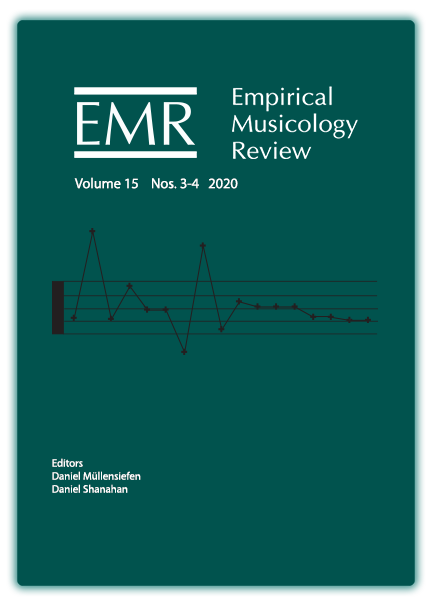Auditory Streaming Complexity and Renaissance Mass Cycles
DOI:
https://doi.org/10.18061/emr.v15i3-4.7980Keywords:
corpus research, Renaissance, polyphony, auditory scene analysis, mass ordinary cycle, texture, counterpoint, Josquin des Prez, PalestrinaAbstract
How did Renaissance listeners experience the polyphonic mass ordinary cycle in the soundscape of the church? We hypothesize that the textural differences in complexity between mass movements allowed listeners to track the progress of the service, regardless of intelligibility of the text or sophisticated musical knowledge. Building on the principles of auditory scene analysis, this article introduces the Auditory Streaming Complexity Estimate, a measure to evaluate the blending or separation of each part in polyphony, resulting in a moment-by-moment tally of how many independent streams or sound objects might be heard. When applied to symbolic scores for a corpus of 216 polyphonic mass ordinary cycles composed between c. 1450 and 1600, we show that the Streaming Complexity Estimate captures information distinct from the number of parts in the score or the distribution of voices active through the piece. While composers did not all follow the same relative complexity strategy for mass ordinary movements, there is a robust hierarchy emergent from the corpus as a whole: a shallow V shape with the Credo as the least complex and the Agnus Dei as the most. The streaming complexity of masses also significantly increased over the years represented in this corpus.Published
How to Cite
Issue
Section
License
Copyright (c) 2021 Finn Upham, Julie Cumming

This work is licensed under a Creative Commons Attribution-NonCommercial 4.0 International License.


